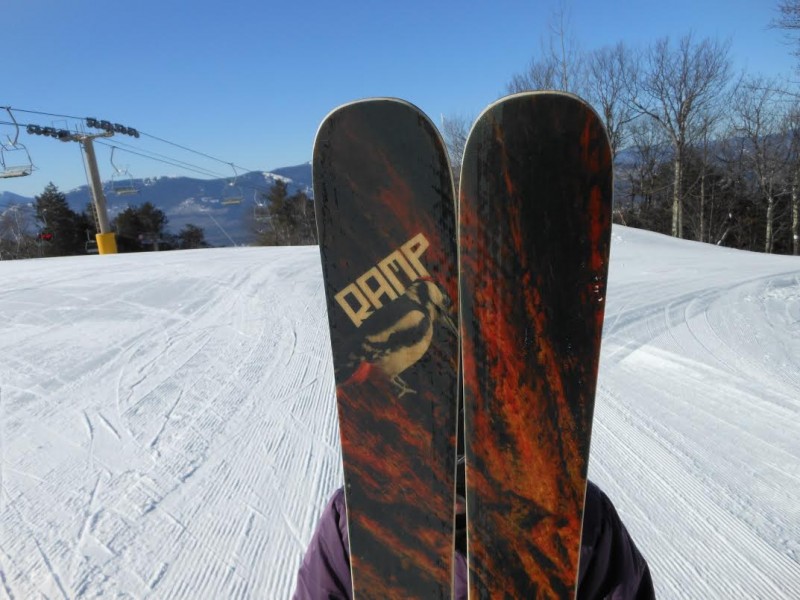Trusted Review™ Scorecard
Average Score: 4.8 out of 5.0
Each product or service is rated on Quality, Reliability, Price/Value, and Referability. Each area has an individual score, and creates an overall Trusted Review™.

The RAMP Woodpecker Skis.
Woodpeckers are known for drumming and drilling on trees, but these cut through the glades silently save only for man-made whoops piercing the forest.
They have long, sticky tongues but the only thing long were the boards and they were remarkably lightweight and responsive.
Those woodpeckers tails are known to stiffen in order to support the bird perched on a limb. This tail was strong too, keeping the Woodpecker agile on the groomed corduroy surfaces.
The Woodpecker is an all-mountain ski, allowing skiers to fly down the groomers and through the forest with its tight trees, chutes, and unexpected drops. The boards are billed as a ski for someone doing maybe two-thirds of their skiing on corduroy and the rest off the trails.
Made by RAMP, I used the skis five times over the course of a New England January that experienced the traditional thaw with rain, and some deep bone-chilling days when the snow guns were ablaze. Fortunately, there was an opening for some tree skiing before Mother Nature’s meltdown.
In other words, pure New England.
The tested boards were a pair of 179 centimeters with tip-waist-tail at 130-90-115 millimeters. The skis themselves weighed just over eight pounds, and were used with a Tyrolia binding. The turn radius was 18.3 with a speed rating of 6-10. The boards are $619, sans binding, from RAMP with a MSRP of $949.
Utah-based RAMP is a relatively new ski and snowboard manufacturer founded in 2010 by a 32-year industry veteran. Based in Park City, RAMP stands for Riders Artists Musicians Project.
Though skiing and snowboarding isn’t exactly totally green, RAMP does its best for the environment by doing things like shipping gear in travel bags instead of boxes. They also have a buyback program where you can trade in any brand of ski or board and get $50 in RAMP credit.
Plus, if you’re skiing and riding in the area, they give free demos from their 10,000-square-foot warehouse that opened in 2012.
The company also sells directly to consumers, though skis are also found in ski shops across the country.
The two main ingredients in the the American-made skis are bamboo and kevlar. The handmade boards are done with what the company calls a revolutionary patent-pending process making use of planet-friendly, US materials.
Frankly, I appreciated the Woodpecker’s graphics. Complete with a woodpecker in the forest, the tone was that of laid-back and natural versus menacing graphics. But graphics shouldn’t—at least in a perfect world—be the only selling point for the boards.
But they were longer and wider than I tend to use.
That didn’t matter.
The skis allowed me to cruise as fast as I wanted to go on the blue square to black diamond terrain I traversed. With each passing run, I tried to lean more on edge and they kept their ground giving me that flight sensation when the rhythm is right.
As for the woods, I was lucky enough to get out a couple of days after a nice snow. Though much was skied out, I was beyond survival mode and able to catch some sweet pockets along the outer edges of a few runs. The fat skis were readily maneuverable even with that relatively big piece of real estate under my boots.
Overall, the Woodpecker is a fine choice for a light and durable ski.
Image by Marty Basch
 Your Privacy Choices
Your Privacy Choices
 The
The